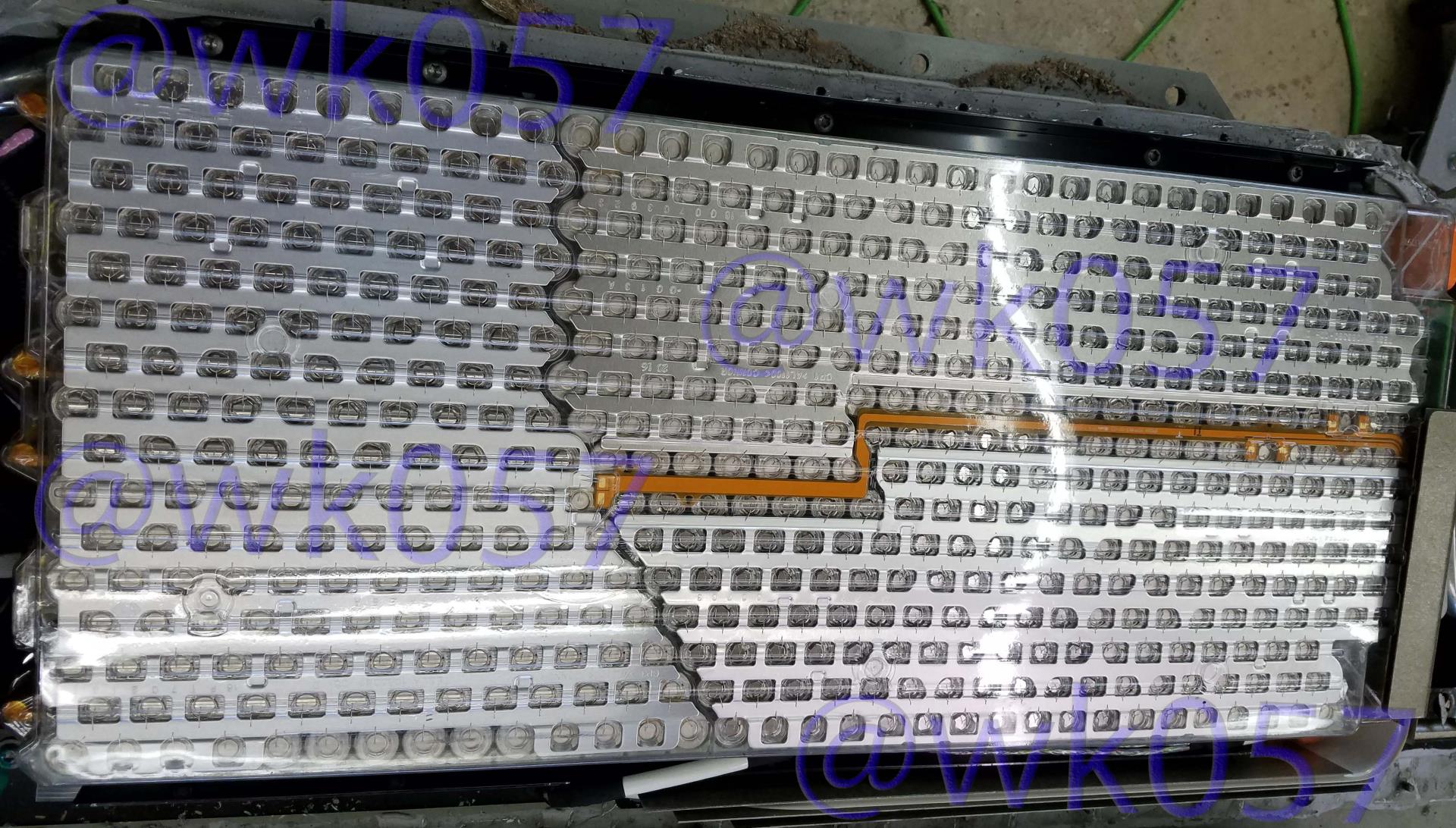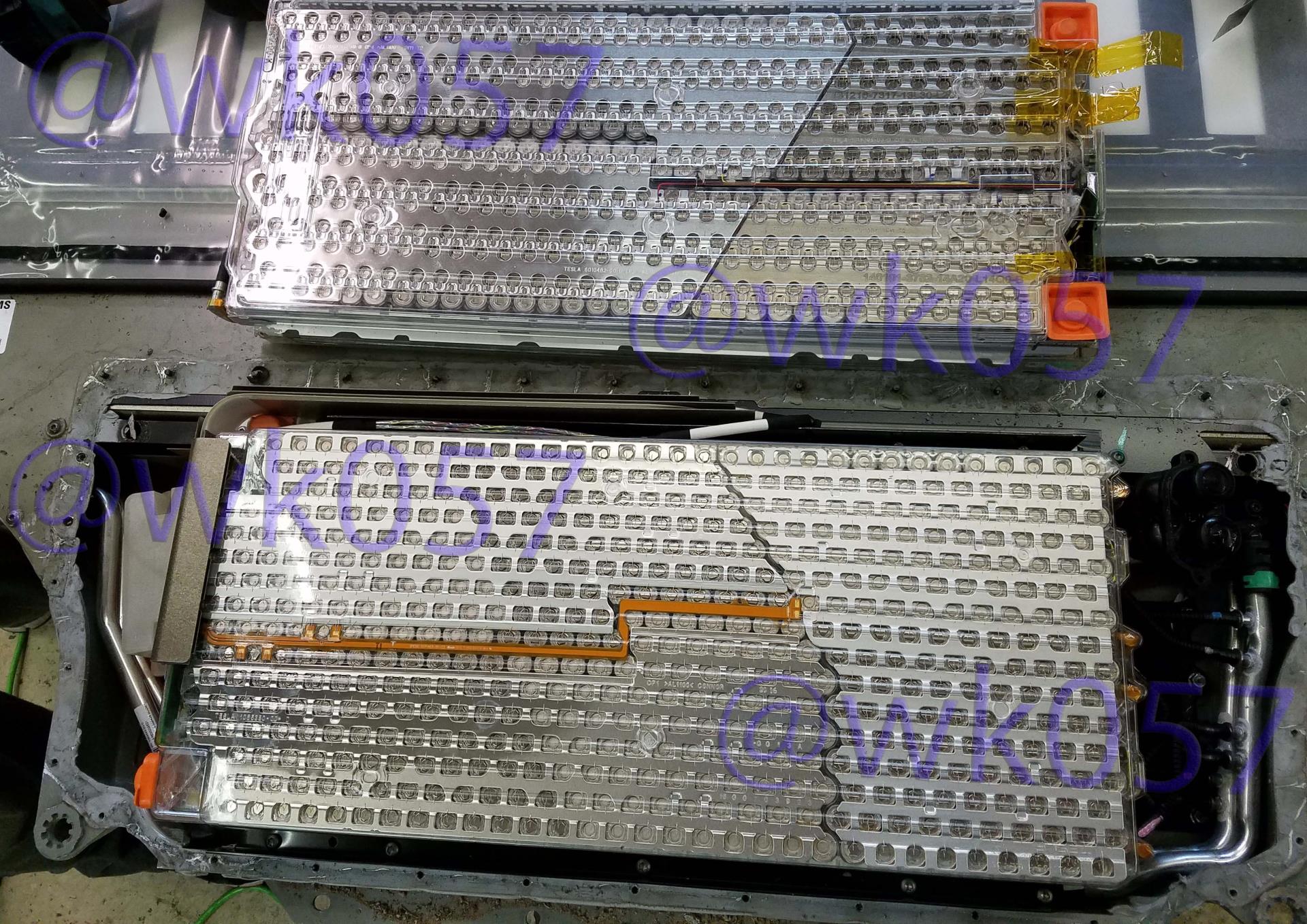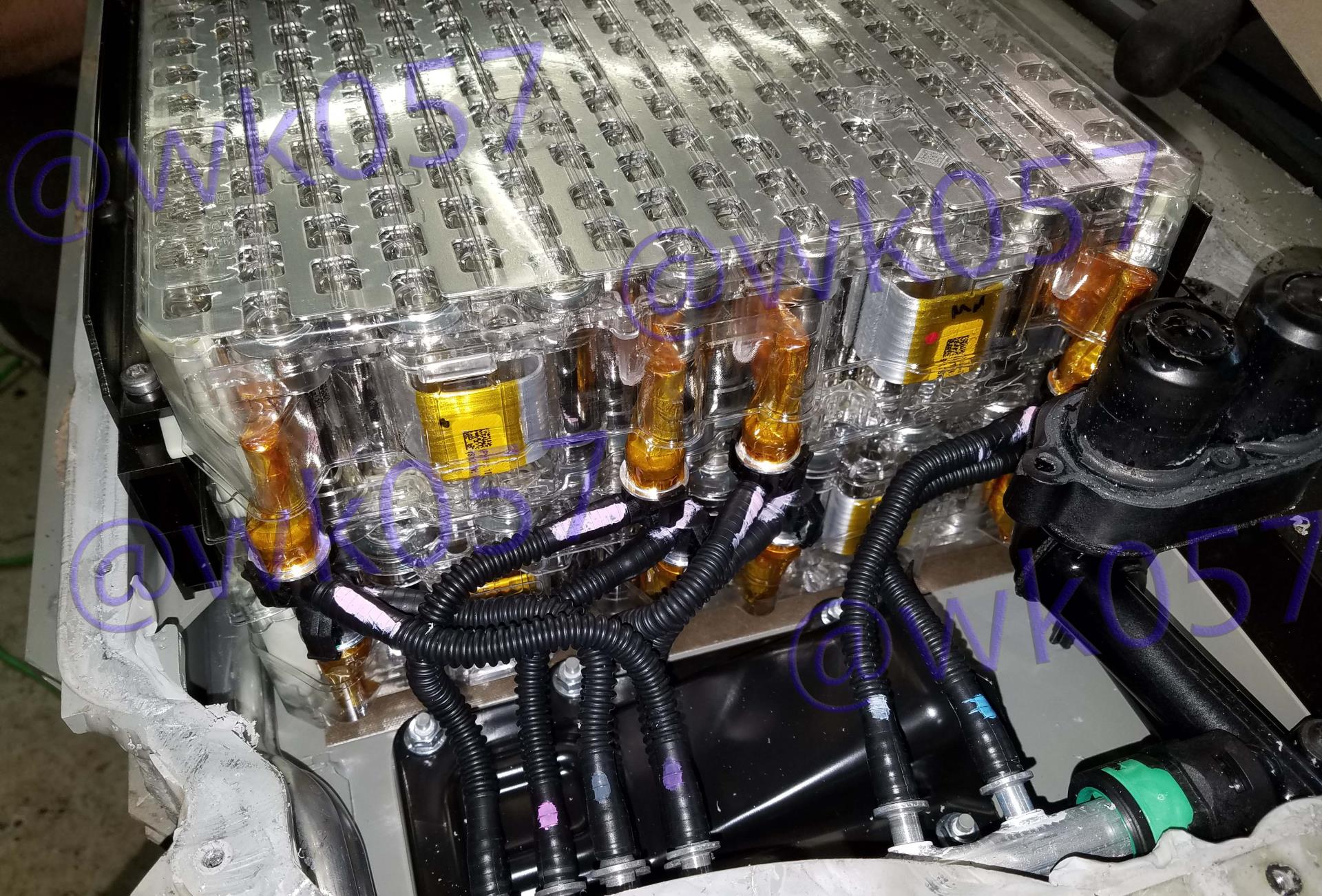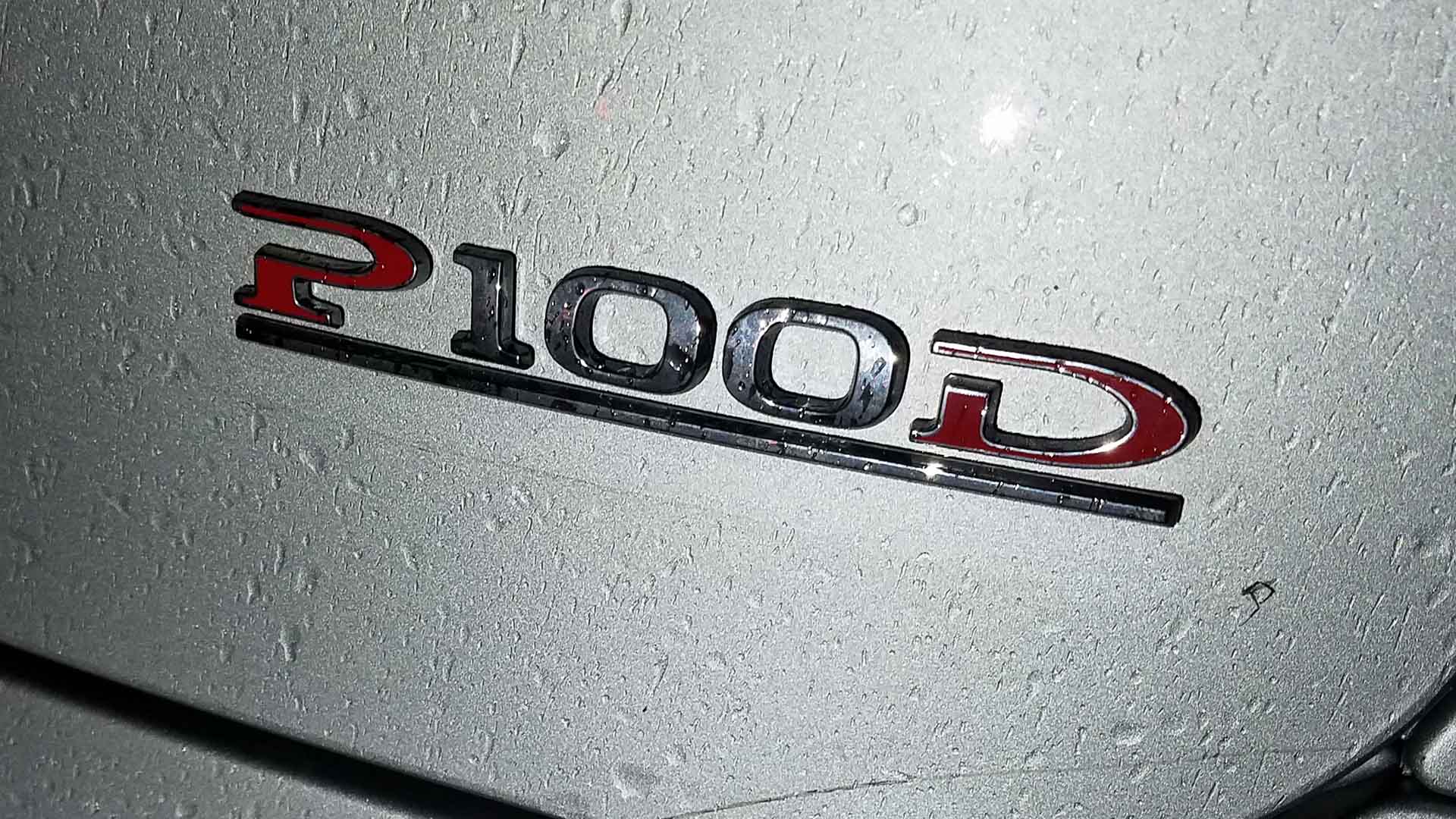I originally posted this on my projects site, but will also post here.
All rights reserved. Images may not be copied or used without my express permission.
Pics and Info: Inside the Tesla 100kWh Battery Pack | wk057's SkieNET
Jason Hughes on Twitter
---
So I recently purchased the first known salvage auction Tesla with the new 100kWh battery pack, a P100D VIN 159k.
There have been tons of rumors flying around how what changes Tesla had made to increase the capacity so drastically. Rumors of new cooling patents, increased voltage, new cell double bond wiring, incompatible with older cars, and all sorts of things.
Personally, I figured Tesla wouldn't reinvent the wheel just yet and go with a whole new pack design, but who knows. Not me, so that had to be corrected.
Without further ado, here is a shot of a module from the 100 kWh pack.

So, immediately with one picture we have a lot of answers.
- They're 18650s
- There are more of them (12 more per group to be exact)
- Single cell fuse/bond wires
- Still six cell groups (no voltage change)
Awesome. 516 cells per module. That's 8,256 cells per pack, a ~16% increase vs the 85/90 packs.
A comparison with an older module makes the added cells more clear:

Basically they crammed a couple more rows of cells into the module.
But what about the rumors around cooling? Well, they did modify the cooling, but not in any exotic way. The new modules simply have two shorter and thinner cooling loops per module. This way the coolant doesnt have to run past so many cells before exiting.

What about compatibility with other/older cars? Well, the pack itself has the same high-voltage connection, the same low voltages connectors, and the same cooling connector. However, the pack has the newer ring around the high-voltage connector. So, it's plug-and-play (for the most part, firmware and config changes needed) on the Model X and refreshed Model S, however it would require a different spacer ring on the high voltage connector. Tesla even has a part number for it, so it should be pretty simple to put into any Model S/X.
The six screws on the orange HV connector can be removed to replace the ring with one compatible with older Model S.
As for real capacity, the BMS reports usable capacity at a whopping 98.4 kWh. It also reports a 4 kWh unusable bottom charge, so that's
102.4 kWh total pack capacity! Congratulations, Tesla. A high capacity pack that meets its nameplate rating!
Also, the BMS reports a max discharge current of 1,760A for the P100D Ludicrous pack. The normal Ludicrous P90D/P85D packs report 1,520A. This makes perfect sense with scaling, since it's 74 vs 86 cells per group.
Additionally, the pyro fuse in the 100 kWh is labeled differently. I couldn't find any physical differences between the normal ones, but it is labeled "DISCONNECT,PYROTECHNIC,HYBRID,100kWh", which suggests it has a different setting for the higher current. It also still has the two non-rechargeable lithium ion cells in the case, suggesting it will need replacement at some point like the rest of them.
It's great to put rumors about this pack to rest. No exotic cooling, is compatible with older cars (physically), no new cell type, etc. Just a new module design that packs more cells into each one.
Enjoy.
-wk







